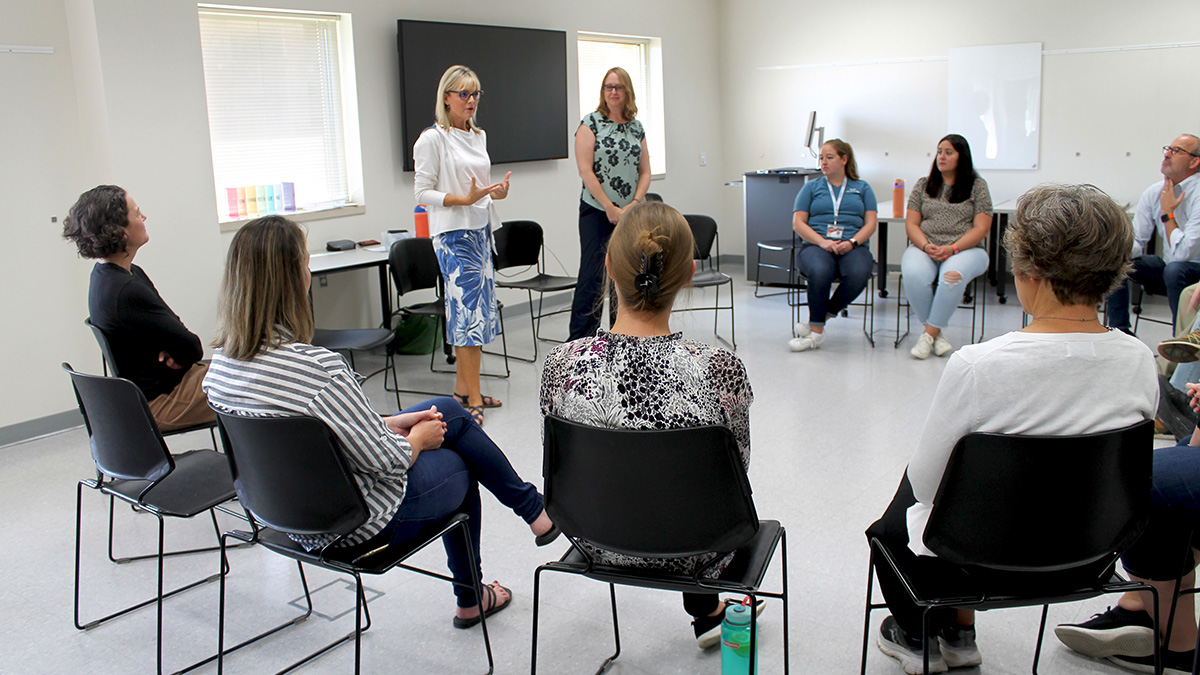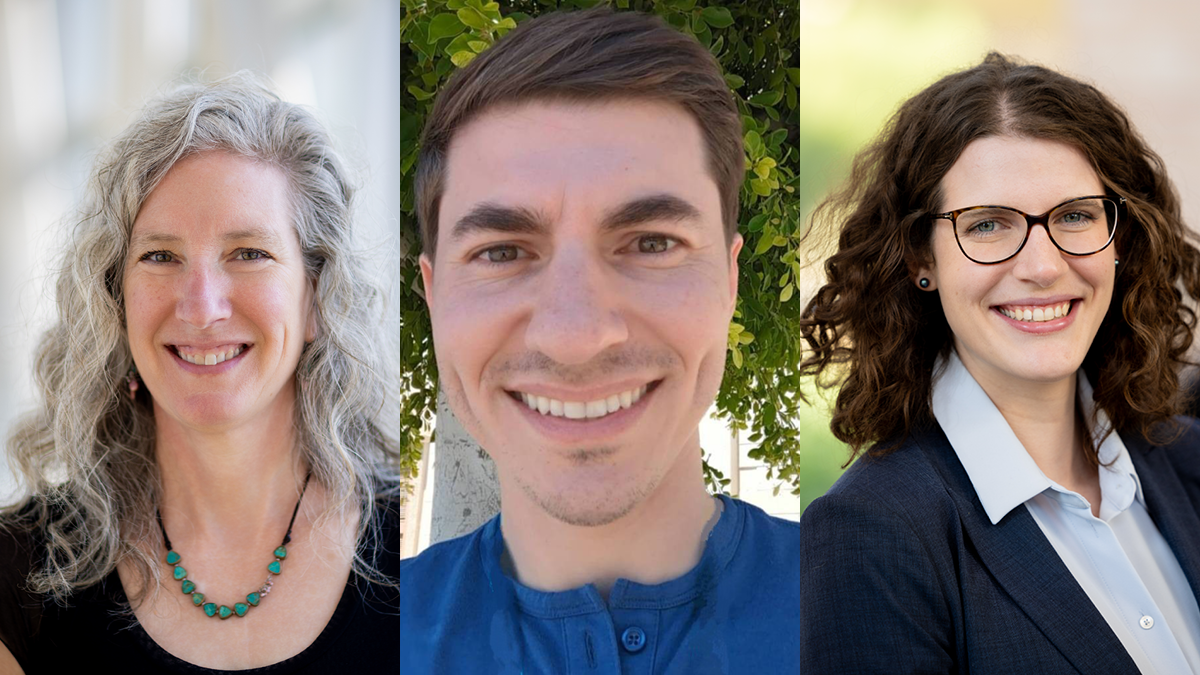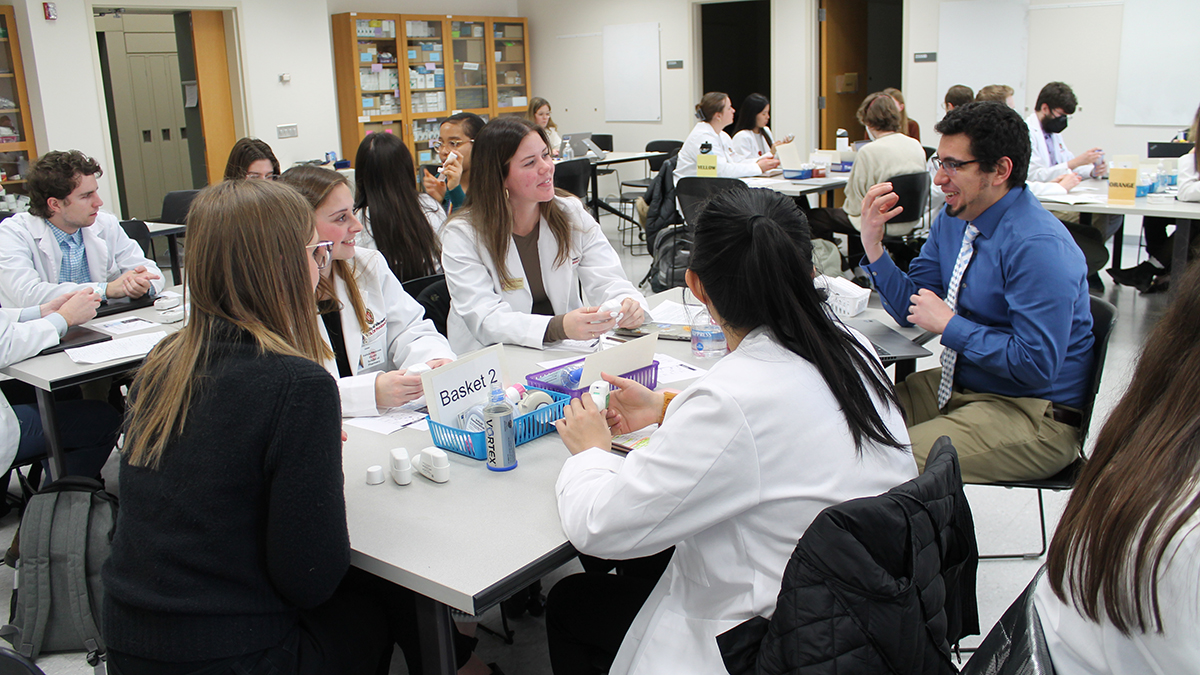
By integrating two divisions, UW–Madison School of Pharmacy faculty aim to strengthen collaboration, research, and training for the next generation of pharmacists
By Archer Parquette
During a routine meeting with fellow University of Wisconsin–Madison School of Pharmacy faculty, Professor Beth Martin (BS ’90, MS ’03, PhD ’06) had an aha moment that grew to reshape two key divisions of the School. It was a virtual call with graduate students and faculty from both the Pharmacy Practice and Translational Research Division, which she chaired, and the Social and Administrative Sciences Division.
“We had this meeting between divisions, and the conversation went so well that it sparked an idea,” says Martin. “I thought if we integrated these two divisions, we could improve our communication. We wouldn’t have to organize these meetings to talk with our colleagues. We’d have a better sense of everyone’s interests and talents and have more conversations like these that would inspire new ideas. And ultimately, that would benefit the students.”
Martin’s sentiments were shared broadly, and this academic year, the two divisions are integrating to form the Clinical Practice, Innovation, and Research Division.
“We’ve had incredible collaborations across these divisions for decades, and that will only continue to accelerate, advancing pharmacy practice and how patients experience care.”
–Steve Swanson
Martin and Professor David Mott (BS ’88, MS ’92, PhD ’95), who was serving as interim chair of the Social and Administrative Sciences Division before the integration, are now leading what they call an “integration year,” a period of transition and change to officially and efficiently make the two divisions one.
“This integration is a natural step in our ongoing mission to enhance the School’s research and education,” says Steve Swanson, dean of the School of Pharmacy. “We’ve had incredible collaborations across these divisions for decades, and that will only continue to accelerate, advancing pharmacy practice and how patients experience care.”
A natural fit
To the faculty, the integration of the two divisions made perfect sense.
“When I think about pharmacy practice, I naturally combine the two aspects — clinical practice and social and administrative sciences. To me, they’ve always gone together,” Mott says. “When you’re acting as a pharmacist, you’re using your clinical skills along with your administrative management and your social communication skills.”

The combination of clinical experience with research experience across the divisions has already led to many fruitful collaborations — and that number is poised to increase with the new structure.
“So many of us work across divisions on research and projects and teaching. We’ve seen the successes of teaching together, doing research together, doing service together,” says Martin. “With this formal integration, we’ll work even more efficiently and collaboratively.”
For example, Martin has frequently collaborated with Professor Betty Chewning on projects targeting improved medication safety for older adults. Over the past two years, Associate Professor Jay Ford, and Associate Professor Cody Wenthur co-launched the Wisconsin Opioid Overdose Response Center to prevent opioid overdoses across the state. And Mott has redesigned a course, Pharmacy in the Healthcare System, with teaching faculty Emma Hickmann and School of Pharmacy alum Pat Cory (BS ’92, PharmD ’95).
“Working with them and combining their perspective on pharmacy with mine enriches the course for the students,” Mott says. “Having these perspectives makes the experience that much better. And for our grad students, the wider perspectives will help steer their research.”
Beyond research and service, faculty see the integration enhancing students’ classroom experience as well.
“So many of us work across divisions on research and projects and teaching. We’ve seen the successes of teaching together, doing research together, doing service together. With this formal integration, we’ll work even more efficiently and collaboratively.”
–Beth Martin
“The division integration will strengthen our teaching and benefit students,” says Associate Professor Amanda Margolis (PharmD ‘09, MS ‘17). “By having more opportunities for us all to be in the same spaces will naturally mean more discussions about what happens in the classroom so we can elaborate on what was already presented to reinforce and build.”
The integration year
As the fall semester begins and the two divisions are officially leading as one, Martin has been elected to lead the newly integrated Clinical Practice, Innovation, and Research Division as chair through its first year, with Mott as vice-chair.
The integration year may have just begun, but Martin is happy with the initial progress.
“One of the great positive indicators I see already is how conversations are starting spontaneously just from all of us being in the same hallways, the same meetings,” says Martin. “We want to keep these conversations going and keep faculty exploring because ultimately those conversations are going to benefit everyone.”
By uniting their strengths, this newly integrated team is poised to define the future of pharmacy through research, practice, and education.

